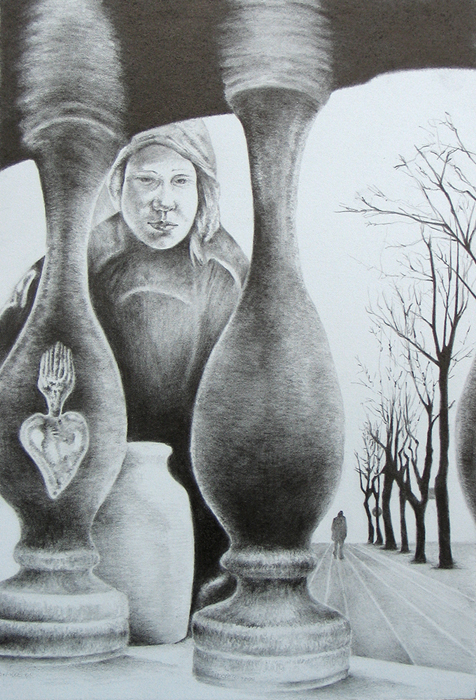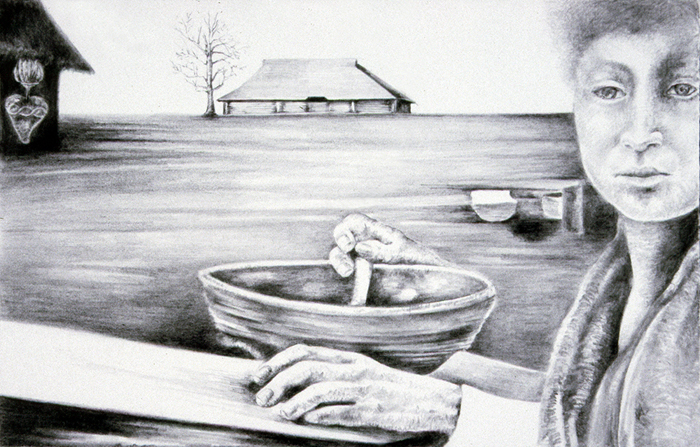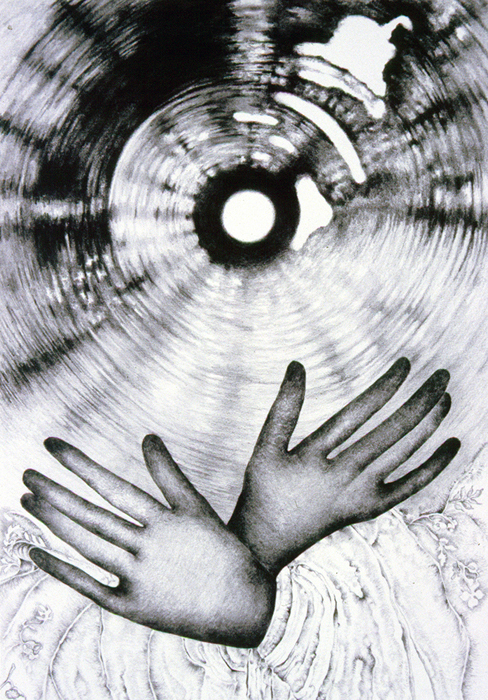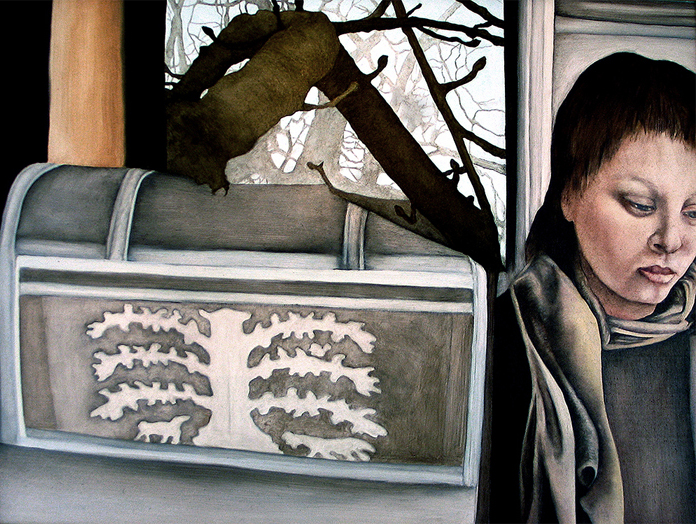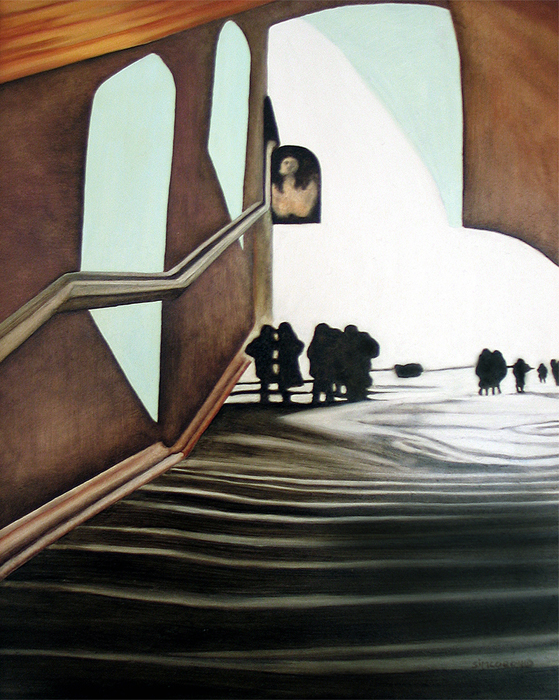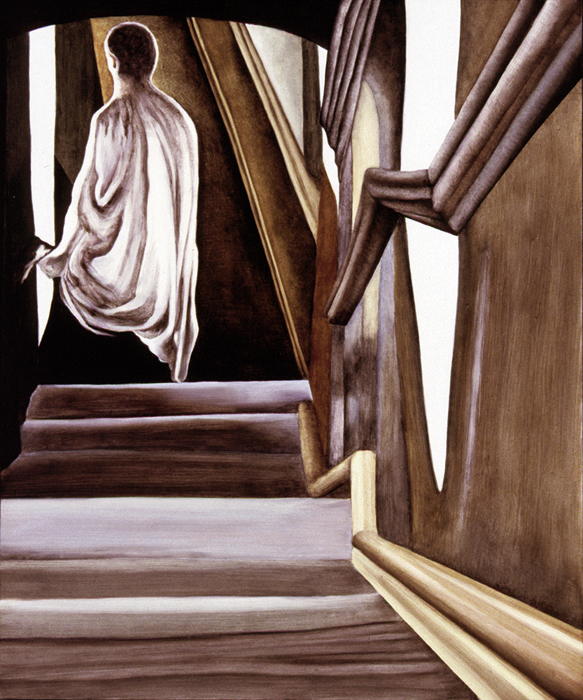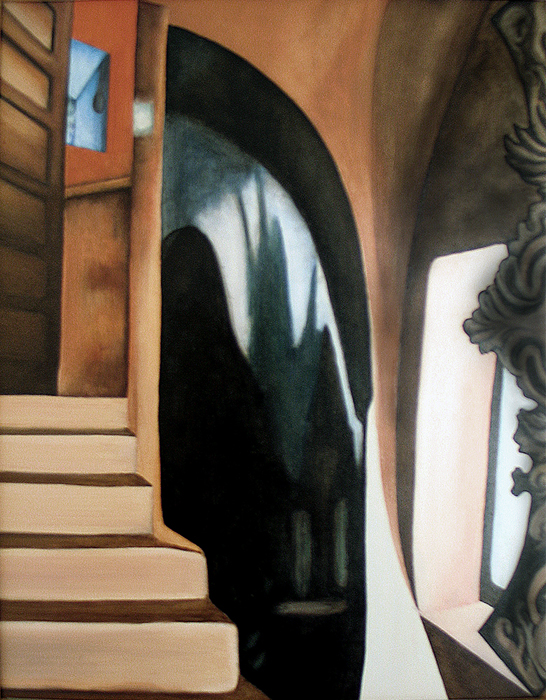Fulbright in Lithuania 2004
An Exhibition at the American Center in Vilnius,
Lithuania of Artworks Created During a Fulbright Experience
I came to Lithuania January of 2004 as a Fulbright Scholar to work and teach in Siauliai for five months. All the work in the exhibition I produced here thus are reflections of my experience of having been in this part of the world. My original intention was to explore Black Madonna imagery that I have been researching for a number of years. But researching and being in the places and seeing the things in which one is interested are two very different kinds of experience.
Another aspect of my interest in this part of the world is that I have family in Eastern Europe, in Latvia, Poland and Croatia. While visiting the Latvian relatives I discovered I also have cousins in Belarus. Visiting the people with whom I have a kinship was a way for me to make direct contact with a past that contains the circumstances from which my parents and I emerged. The idea of connection to my Eastern European heritage has always been very important to me, as a person and as an artist. But the experience of being here has made the connection more real, more concrete. I believe it has also altered my sense of what I want to do as an artist and what kind of artist I want to be. The short time I have been here allowed me to work in a very focused manner. The changes I am feeling internally are just beginning and are manifested in these works. And I believe that they will continue to evolve. In some ways, I almost feel as though my work is just beginning. Being here has made that possible.
Oil Paintings
Arrival, Passageway and Dievas work together as a group and are about my experience of moving through the shrine of the Ausros Vartu Black Madonna of Vilnius. Arrival employs an image of the stairway that leads to the shrine. The images of the tiny figures were shot off a TV screen from a Russian documentary. Passageway uses an image of a stairwell in the Siauliai Cathedral, an architectural element from the Vilnius Cathedral of St. Peter and St. Paul and a film still from the Russian film Ivan the Terrible. The title Dievas references the Lithuanian god Dievas, but originally I did not intend that identification of the figure. I actually selected the figure because it was mysterious and ethereal and appeared as if floating in the stairwell. But in follow up research I came upon a description of the pagan Lithuanian deity Dievas one of whose avatars is that of a young man dressed in light and silver.
The next three paintings, Aritone, Annunciation and Latvian Madonna, specifically use folk imagery and winter imagery from Siauliai. There are also two portraits in them. Aritone is a friend in Siauliai. Latvian Madonna has in it a portrait of my cousin, Arina. Annunciation has the blurred, distant figure of a woman working by a window. All three paintings suggest a Baltic manifestation of the Madonna. The tree imagery in each painting refers to both the ancient Lithuanian belief system that held all trees and forests to be revered and some to be treated as sacred. The trees also are a personal reference because of my arrival in Lithuanian in the middle of winter. The light and the bare trees of my first months here are very prominent in my memory.
Graphite Drawings
The first two drawings, She Is Dark, She Is Beautiful and I came home from Zemele, I will return to Zemele are directly about the Ausros Vartu Madonna. The first title acknowledges the darkness of the Madonna and loosely makes reference to a passage in the Song of Songs of the Old Testament. The second is from a short prayer to Zemyna, Lithuanian Earth Goddess. Both drawings reference the lineage of the Black Madonna iconographic type that can be traced to ancient world agricultural earth and fertility goddesses.
The drawing Wisdom employs the crescent moon of the Ausros Vartu Madonna and includes the image of woman’s face that could be construed to be a reflection in a mirror surrounded by lush plant like imagery to reference the connection of the Madonna/Goddess to earth and plant imagery. But the title Wisdom also references the concept from the ancient world of Hagia Sophia, or Holy Wisdom, the persona of which is a female. The identity of the woman can also be understood as a representation of the feminine aspect of the divine.
Arina Keeps Watch again uses the image of my cousin and also employs the imagery of winter trees that hold the nests of ravens. The black raven is an image that is also found in writings about the Black Madonna, specifically the Black Madonna of Einseindeln in Switzerland, and is associated with alchemy. The color black appears in initial stages of alchemical transformation and in Medieval times was called ‘the Raven’. To keep watch is to stay, to be vigilant as the process of transformation occurs.
Bernadette Contemplates the Meaning is a portrait of my sister in front of shadow imagery of trees from a photograph I took at the Russian Orthodox Church of the Holy Spirit that is close to the Ausros Vartu shrine. Again, the presence of winter trees throughout much of my stay in Lithuania has been very powerful for me. And, once again, I use tree imagery to acknowledge its importance in Lithuanian mythology.
The Way to the House loosely references a Madonna in a Lithuanian Landscape. Which of the two buildings depicted in the drawing is the “house” is not clear nor is meant to be clear. The house can also be her heart, and the sacred heart which she and her son both share. The drawing Alchemy also contains an image of a sacred heart and, again, makes reference to the processes of alchemy as well as to the winter trees and light of Lithuania.
May 2004


